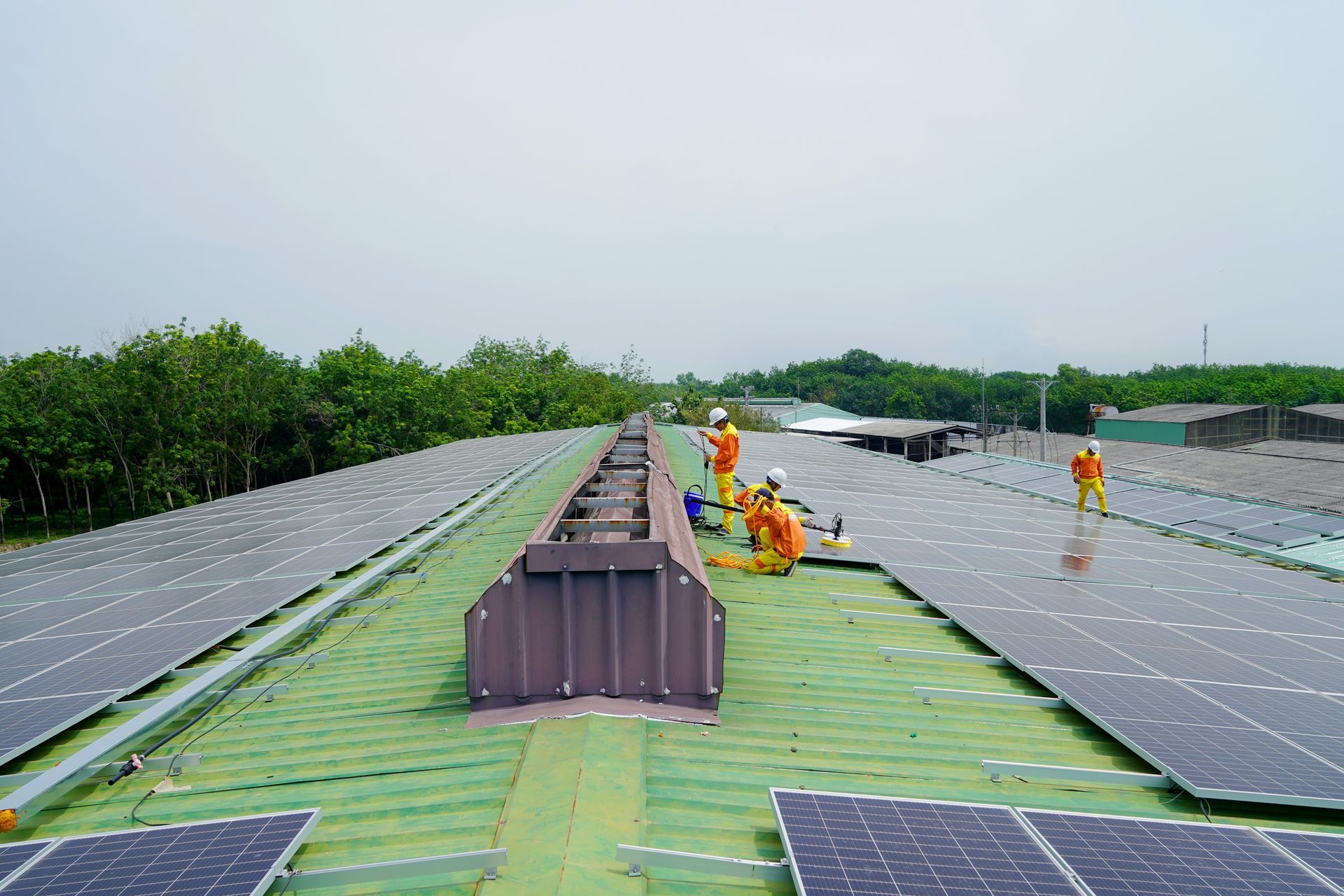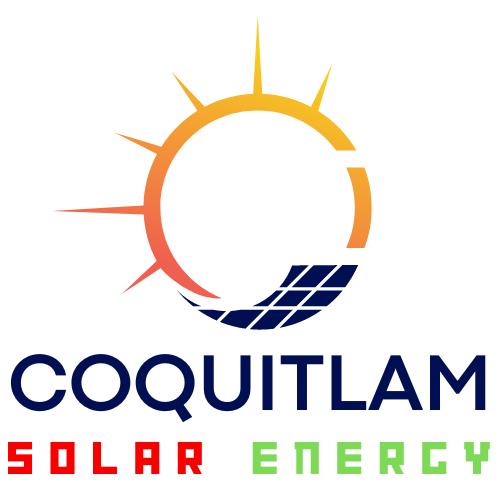Types of Solar Panels Used by Solar Panel Companies
Did you know that the sun's energy can meet the Earth's energy needs for an entire year in just one minute? In fact, within a single day, the sun generates more energy than the world consumes in 27 years.
This makes solar energy reliable and long-lasting but also cost-effective and efficient.
Solar panel installation is a wise choice to maximize this energy. But what type of solar panel should you install? We’ll examine its different types and choose the perfect fit for your home.
The 4 Types of Solar Panels
There are 4 popular
types of solar panels: monocrystalline, polycrystalline, PERC, and thin-film panels.
Solar Panel Type
Monocrystalline Solar Panels
Polycrystalline Solar Panels
Passivated Emitter and Rear Cell (PERC) Panels
Thin-Film Solar Panels
Efficiency Rate
20% and up
15-17%
Highest (5% more than monocrystalline)
CIGS: 13-15%
CdTe: 9-11%
a-Si: 6-8%
Advantages
- Excellent efficiency
- Tailored for commercial applications
- Substantial long-term value
- Lower cost
- Needs the smallest space
- Best efficiency
- Highest power output
- Reasonably affordable
- Simple to manufacture and adaptable
Disadvantages
- Expensive
- Limited output during production
- Prone to heat sensitivity
- Shorter lifespan and slightly reduced space efficiency
- Costly
- Certain earlier panels experienced degradation due to light and high temperatures
- Reduced warranty periods and lifespan
1 . Monocrystalline Solar Panels (Mono-SI)
Monocrystalline
solar
panels, sometimes called single-crystal panels, are crafted from one single pure silicon crystal sliced into wafers. They're easy to spot because they're dark black. These panels are the best at saving space and last the longest of the types of solar panels.
But there's a downside. Making one monocrystalline cell uses a lot of silicon, sometimes more than half. That's why they can be quite expensive.
2 . Polycrystalline Solar Panels (Poly-SI)
You can easily recognize these panels because they have a square shape with no cut angles and a speckled blue appearance. They're made by melting silicon, which is a quicker and cheaper way than what's done for monocrystalline panels.
This makes them cheaper to buy, but they're not as efficient as others. They take up more space and don't last as long, especially in hot weather.
3. Passivated Emitter and Rear Cell (PERC) Panels
PERC solar panels, called 'rear cells,' are a better version of the regular monocrystalline solar cell. This new technology puts a special layer on the back of the cell, and it makes the panel work better in a few ways:
- It bounces sunlight back into the cell, so more of it gets used.
- It stops electrons from sticking together and slowing down the electricity flow.
- It reflects longer wavelengths of light. Some sunlight, with wavelengths over 1,180nm, can't be used by regular solar panels. This special layer stops those long wavelengths from heating things.
PERC panels collect more solar power in a smaller space, so they're great if you don't have a lot of room. Although they come with a higher cost, their production employs the same machinery, potentially rendering them more cost-effective in terms of electricity production per unit.
4. Thin-Film Solar Panels
Thin-film panels are special because they have very thin layers that can bend. They don't need a strong frame like regular solar panels, so they are lighter and easier to implement. Unlike the silicon panels that usually come in set sizes, thin-film panels can be made in different sizes to fit different needs. However, they aren't as good at making electricity as the regular silicon ones.
Thin-film panels have different types. These include:
Cadmium telluride (CdTe)
CdTe is similar to polycrystalline cells when it comes to being affordable, but it's the most environmentally friendly of all solar panel types. It has a small carbon footprint, needs very little water, and pays back the energy used to make it pretty quickly. However, because cadmium is toxic, recycling CdTe panels is costlier than other materials.
Amorphous silicon (a-Si)
Amorphous silicon panels, abbreviated as A-Si, earn their moniker "shapeless" due to their distinct silicon structure compared to other panels. They require a smaller amount of silicon for manufacturing, resulting in reduced costs. Their power generation efficiency is lower and are suitable for devices like pocket calculators that have minimal electricity demands.
Copper indium gallium selenide (CIGS)
CIGS panels have a thin copper, indium, gallium, and selenium layer on a glass or plastic base. They're better at making power than other thin panels but still not as good as regular silicon ones.
What Type of Panel Is Best for Your Installation?
The decision about which solar panel to use depends on your situation. Both crystalline and thin-film panels have their good and not-so-good points.
If you have limited space, it's smart to pick monocrystalline panels because they're super efficient. They make the most of your space and save you money on energy. If you can spend more, PERC panels can reduce energy costs.
If you have a big property, consider polycrystalline solar panels to save money upfront. These panels are bigger, so they make up for being less efficient. But remember, bigger panels can mean more work to install, which could cost you extra. Even though they're cheaper initially, the lower efficiency might cost you more in the long run.
Thin-film solar panels are best for places where putting up crystalline silicon panels is tricky. That could be commercial buildings with little space or roofs that aren't very strong, small spaces like RVs or boats, or spots where you need flexible panels, not stiff ones.
Remember, solar panels stick around for a long time, maybe up to 25 years. So, no matter which kind you choose, ensure it's the right one for your needs after researching.

Expert Assistance From Solar Panel Companies Near Me
Picking the appropriate solar panels for your home might appear daunting, but once you've collected all the details, making the choice becomes simpler. When deciding on the best solar panel for your home, always weigh the advantages and disadvantages of each option.
Opt for trustworthy
solar panel contractors to handle the procedure for a more expert and secure solar panel installation. They will assist you in optimizing your investment and achieving sustainability.
CONTACT
Telephone: 604-337-1958
E-mail: info@coquitlamsolarenergy.ca
LOCATION
Coquitlam, BC V3B 0A4, Canada
Coquitlam Solar Energy | All Rights Reserved | 2023
